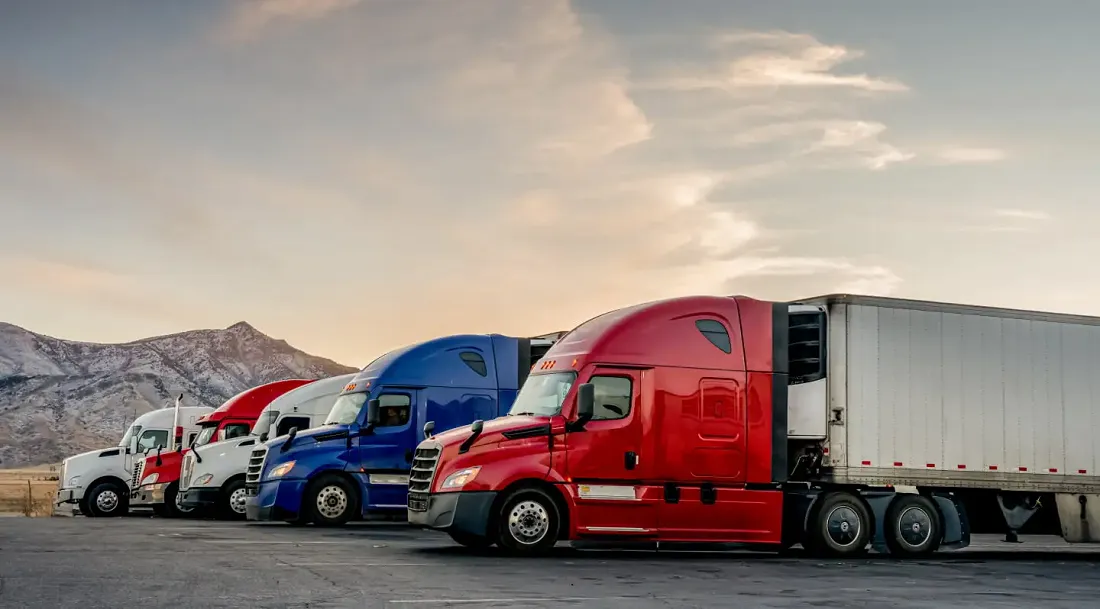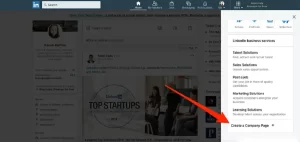Table of Contents
How to Start a Trucking Business with One Truck -
Starting a trucking business with one truck can be exciting, offering opportunities for independence and growth in the transportation industry. However, it requires careful planning, knowledge of the industry, and attention to detail. In this comprehensive guide, we will walk you through the step-by-step process of starting a trucking business with one truck, from research and planning to operational setup and growth strategies.
Step 1: Research the Trucking Industry
Before diving into the trucking business, conducting thorough research is crucial to understand the industry comprehensively. Consider the following:
- Market Demand: Identify the types of freight that are in demand in your target market. Research industries with consistent transportation needs, such as manufacturing, retail, or agriculture. This will help you narrow down your specialization and target customer base.
- Competition: Analyze existing trucking companies in your area. Identify their strengths, weaknesses, pricing strategies, and target markets. Look for gaps or opportunities where you can differentiate your business and offer unique value to customers.
- Regulations: Familiarize yourself with federal and state laws that govern the trucking industry. This includes obtaining necessary licenses and permits, complying with safety regulations, and understanding hours of service rules. Compliance is essential for operating legally and avoiding penalties.
Step 2: Develop a Business Plan
A well-structured business plan is crucial for guiding your trucking business toward success. Consider the following key elements:
- Executive Summary: Provide an overview of your business, objectives, and mission statement.
- Market Analysis: Identify your target market, including industries and geographical areas. Analyze market trends, competition, and customer needs.
- Services and Pricing: Define your services, such as long-haul, regional, or local transportation. Determine your pricing strategy based on distance, load weight, and market rates.
- Marketing and Sales: Outline your marketing strategies to attract customers. Consider digital marketing, networking with industry professionals, and building strong relationships with shippers and brokers.
- Operational Structure: Define the legal structure of your business, such as a sole proprietorship, partnership, or LLC. Discuss your organizational structure, key personnel, and roles within the company.
- Financial Projections: Estimate your startup costs, including truck purchase or lease, insurance, permits, and working capital. Develop revenue projections based on expected load volumes, rates, and anticipated expenses.
- Risk Assessment: Identify potential risks and challenges your business may face. Develop strategies to mitigate these risks and ensure business continuity.
Step 3: Establish a Legal Entity
Setting up the legal framework for your trucking business is essential to ensure compliance and protect your assets. Follow these steps:
- Business Structure: Determine the legal structure of your business, such as a sole proprietorship, partnership, or LLC. Consult an attorney or accountant to choose the most suitable format.
- Business Name and Registration: Choose a unique and memorable name for your trucking business. Register your business name with the appropriate government agency, such as the Secretary of State or Department of Revenue.
- Licenses and Permits: Obtain the necessary licenses and permits to operate legally. This may include a Motor Carrier Number (MC Number), USDOT Number, and International Fuel Tax Agreement (IFTA) permit. Check with your state’s Department of Transportation for specific requirements.
- Insurance: Protect your business and assets by obtaining commercial truck insurance. This should include liability coverage, cargo insurance, and physical damage coverage for your truck. Consult with insurance providers specializing in the trucking industry to ensure you have adequate coverage.
Step 4: Acquire Financing
Securing financing for your trucking business is crucial to cover startup costs and ensure smooth operations. Consider the following steps:
- Estimate Startup Costs: Calculate your startup costs, including purchasing or leasing a truck, insurance premiums, permits, licenses, fuel expenses, maintenance costs, and initial working capital. Develop a comprehensive budget to determine your financing needs.
- Explore Financing Options: Research different financing options available to you. These may include small business loans from banks or credit unions, equipment financing tailored to truck purchases, or personal savings. Evaluate each option’s terms and interest rates to find the most suitable one for your business.
- Prepare a Business Plan: Develop a detailed business plan that outlines your objectives, market analysis, financial projections, and growth strategies. This will help lenders understand the viability and potential of your trucking business. Presenting a solid business plan will increase your chances of obtaining financing.
- Approach Lenders: Approach banks, credit unions, or alternative lenders with your business plan and financial documentation. Be prepared to provide personal and business financial statements, tax returns, and other relevant documents to support your loan application. Consider working with lenders experienced in providing financing to the trucking industry.
- Seek Government Assistance: Research government programs or grants available to small businesses in the transportation sector. These programs may offer financial assistance or resources to help you start and grow your trucking business. Check with local economic development agencies or small business administration offices for potential opportunities.
- Build Relationships with Investors: If you’re looking for equity financing, explore partnering with investors interested in the transportation industry. Networking events, industry conferences, and online platforms can connect you with potential investors who can provide the capital needed to start or expand your trucking business.
Step 5: Acquire a Truck
Acquiring a truck is one of the most significant investments for your trucking business. Consider the following steps when purchasing or leasing a truck:
- Determine Your Needs: Identify the specific requirements for your truck based on the types of freight you plan to transport, such as weight capacity, trailer compatibility, and specialized equipment (if applicable).
- New vs. Used Trucks: Decide whether to purchase a new or used truck. While new trucks offer the advantage of reliability and the latest technology, used trucks can be a more affordable option for startup businesses. Conduct thorough inspections and consider maintenance records when buying used trucks.
- Research Truck Models: Research different truck models from reputable manufacturers. Consider fuel efficiency, maintenance costs, durability, and driver comfort. Read customer reviews and seek advice from experienced truckers to make an informed decision.
- Financing or Leasing Options: Explore financing options specifically designed for commercial truck purchases. Many dealerships offer financing plans tailored to the needs of trucking businesses. Leasing is another option, allowing you to use a truck for a fixed period while making monthly payments.
- Negotiate with Dealers: Once you’ve chosen a truck model, negotiate with dealers for the best price. Consider additional incentives or warranties that can add value to your purchase. Compare offers from different dealerships to ensure you get the most competitive deal.
- Insurance and Registration: Ensure your truck is adequately insured before hitting the road. Obtain commercial truck insurance that covers liability, cargo, and physical damage. Register the truck with the appropriate authorities and obtain license plates and registration documents.
- Maintenance and Upkeep: Establish a regular schedule for your truck to keep it in optimal condition. This includes routine inspections, oil changes, tire rotations, and other preventive measures. Develop relationships with trusted mechanics and service providers who specialize in commercial trucks.
Step 6: Obtain Necessary Insurance Coverage
Insurance is critical to protecting your trucking business from potential risks and liabilities. Here are some important considerations:
- Commercial Truck Insurance: Acquire commercial truck insurance to cover various aspects of your business, including liability, cargo, and physical damage coverage. This insurance will protect you in the event of accidents, cargo damage or loss, and damage to your truck or other vehicles.
- Liability Insurance: Liability insurance covers damages or injuries caused by your truck to other people or property. It is essential to have sufficient liability coverage to meet legal requirements and protect your business from potential lawsuits.
- Cargo Insurance: Cargo insurance provides coverage for the freight you transport. It protects against damage, theft, or loss of goods in transit. Different types of cargo may require specialized insurance coverage, such as refrigerated goods or hazardous materials.
- Physical Damage Coverage: Physical damage coverage protects your truck against damage resulting from accidents, theft, vandalism, or natural disasters. This coverage ensures you can repair or replace your truck if it is damaged or totaled.
- Insurance Providers: Work with insurance providers that specialize in commercial trucking. They understand the specific needs and risks associated with the industry. Shop around and compare quotes from multiple providers to ensure you get the best coverage at a competitive price.
- Insurance Deductibles: Consider the deductible amount when selecting insurance coverage. A higher deductible will lower your premiums but may result in higher out-of-pocket expenses in the event of a claim. Choose a deductible amount that aligns with your risk tolerance and financial capabilities.
- Regulatory Compliance: Ensure that your insurance coverage meets the minimum requirements of regulatory bodies such as the Department of Transportation (DOT) and Federal Motor Carrier Safety Administration (FMCSA). Failure to maintain adequate insurance coverage can result in penalties or even suspending your operating authority.
- Continuous Review: Regularly review your insurance coverage as your business grows or your needs change. Periodically reassess your coverage limits to ensure they align with the value of your assets and potential liabilities.
Step 7: Develop a Network of Customers and Partners.
Building a solid network of customers and partners is essential for the success and growth of your trucking business. Consider the following strategies:
- Freight Brokers and Load Boards: Establish relationships with freight brokers who can connect you with shippers and provide you with available loads. Utilize online load boards and freight matching platforms to find additional opportunities. Be proactive in securing contracts and negotiating rates.
- Shippers and Manufacturers: Identify potential customers in industries that require transportation services. Reach out to manufacturers, wholesalers, and retailers to offer your services. Attend trade shows or industry events to network with potential customers and learn about their transportation needs.
- Networking and Associations: Join local or national trucking associations and participate in industry events. Networking with other trucking professionals can lead to valuable partnerships and referrals. Stay active on online forums or social media groups dedicated to the trucking industry to expand your network.
- Provide Exceptional Service: Deliver exceptional customer service to build a positive reputation. Be reliable, punctual, and communicative. Establish strong relationships with your clients based on trust, professionalism, and quality service.
- Referrals and Testimonials: Encourage satisfied customers to provide testimonials and refer your services to others. Positive word-of-mouth can be a powerful tool for expanding your customer base. Display testimonials on your website or marketing materials to build credibility.
- Collaboration with Other Carriers: Explore opportunities for collaboration with other trucking companies. This can include partnering with complementary businesses to offer comprehensive logistics solutions or subcontracting with other carriers during peak seasons or when additional capacity is needed.
- Continuous Communication: Regularly communicate with your customers, partners, and industry contacts. Stay informed about their evolving needs and industry trends. Communication can be through phone calls, emails, newsletters, or social media. Providing updates, sharing relevant industry information, and promptly addressing concerns will strengthen your relationships.
- Provide Value-Added Services: Differentiate your trucking business by offering value-added services. This could include additional services such as warehousing, distribution, or specialized handling of certain types of cargo. You can attract and retain customers by going above and beyond standard transportation services.
- Develop Long-Term Contracts: Establish long-term contracts with customers who require consistent transportation services. These contracts provide stability and recurring revenue for your business. Work towards building mutually beneficial relationships based on trust and reliability.
- Embrace Technology: Utilize technology to streamline your operations and enhance customer service. Invest in a user-friendly transportation management system (TMS) to manage loads, track shipments, and automate administrative tasks. Adopt electronic logging devices (ELDs) to comply with hours of service regulations and improve efficiency.
- Monitor Industry Trends: Stay updated on industry trends, regulation changes, and emerging technologies. This knowledge will help you adapt to market demands, identify new opportunities, and make informed business decisions.
Step 8: Ensure Compliance with Regulations
Compliance is crucial for operating a legal and successful trucking business. Consider the following:
- Federal and State Regulations: Familiarize yourself with federal and state regulations that govern the trucking industry. These regulations include hours of service rules, driver qualification standards, vehicle maintenance requirements, and safety regulations. Stay informed about any updates or changes in these regulations to ensure compliance.
- Obtain Required Permits and Licenses: Obtain the necessary permits and licenses to operate legally. This may include a Motor Carrier Number (MC Number), USDOT Number, and International Fuel Tax Agreement (IFTA) permit. Additionally, obtain any state-specific permits required for transporting certain types of goods.
- Driver Compliance: Ensure that drivers in your employ have the appropriate Commercial Driver’s License (CDL) for the type of truck they are operating. Regularly monitor their compliance with hours of service rules, drug and alcohol testing requirements, and driver qualification standards.
- Safety and Maintenance: Prioritize safety and vehicle maintenance to comply with regulations and ensure the well-being of your drivers and the public. Regularly inspect and maintain your trucks, keep accurate records of maintenance and repairs, and implement driver safety training programs.
- Stay Updated with Compliance Changes: Stay vigilant about regulatory changes and updates. Follow industry news, attend conferences, and maintain relationships with industry associations and regulatory agencies. Compliance violations can result in fines, penalties, or even the suspension of your operating authority.
Step 9: Focus on Operations and Efficiency.
Efficient operations are essential for the success of your trucking business. Consider the following strategies:
- Efficient Dispatching: Implement an effective dispatching system to optimize load assignments, routes, and driver schedules. Utilize technology such as GPS tracking to monitor truck locations and communicate with drivers in real time.
- Fuel Management: Fuel costs constitute a significant expense in the trucking industry. Implement fuel management strategies such as monitoring fuel efficiency, driver behavior, and optimizing routes to minimize fuel consumption.
- Maintenance and Repairs: Develop a proactive maintenance program for your trucks to minimize breakdowns and maximize uptime. Schedule regular inspections, oil changes, and preventive maintenance to ensure your trucks are in optimal condition.
- Driver Retention and Training: Retaining qualified and reliable drivers is crucial for your business’s stability and reputation. Offer competitive compensation packages, a positive work environment, and opportunities for career development. Implement driver training programs to enhance skills, safety awareness, and regulation compliance.
- Load Optimization: Optimize load planning and consolidation to maximize truck capacity utilization. Efficiently scheduling pickups and deliveries can reduce empty miles and increase profitability.
- Route Optimization: Utilize route optimization software to determine the most efficient routes for your drivers. Minimizing mileage and reducing idle time can improve fuel efficiency and reduce operating costs.
- Embrace Technology: Invest in technology solutions that streamline operations and enhance efficiency. This can include implementing a Transportation Management System (TMS) for load management, driver communication tools, electronic logging devices (ELDs), and telematics systems for monitoring vehicle performance and driver behavior.
- Effective Financial Management: Maintain accurate financial records and implement effective financial management practices. Monitor expenses, track revenues, and regularly analyze financial performance. Utilize accounting software to streamline invoicing, payroll, and financial reporting.
- Continuous Improvement: Regularly assess your operations for areas of improvement. Seek feedback from drivers, customers, and partners to identify bottlenecks or inefficiencies. Continuously evaluate and refine your processes to enhance productivity and customer satisfaction.
Step 10: Plan for Growth and Expansion
Once your trucking business with one truck is established and running smoothly, consider strategies for growth and expansion:
- Evaluate Market Opportunities: Continually assess market trends, customer demands, and emerging opportunities. Identify potential niches or untapped markets where you can expand your services.
- Increase Fleet Size: Gradually expand your fleet by adding more trucks as your business grows. Acquire additional trucks through purchase or lease, ensuring they align with your business requirements and customer demands.
- Diversify Service Offerings: Consider expanding your service offerings to provide a broader range of transportation solutions. This can include specialized services such as refrigerated, oversized cargo, or intermodal transportation.
- Geographic Expansion: Explore opportunities to expand your operations to new geographic areas. Research markets with high demand for transportation services and establish a presence by partnering with local businesses or opening branch offices.
- Strategic Partnerships and Acquisitions: Consider strategic partnerships or acquisitions to accelerate growth. Collaborate with complementary businesses or acquire smaller trucking companies to expand your customer base and market share.
- Invest in Technology: Continue to embrace technology and stay updated with advancements in the transportation industry. Explore innovative solutions such as automation, artificial intelligence, and predictive analytics to optimize operations and gain a competitive edge.
- Customer Relationship Management: Nurture existing customer relationships while actively pursuing new clients. Provide excellent customer service, adapt to their evolving needs, and offer customized solutions to maintain loyalty and attract new business.
- Monitor Industry Regulations: Stay informed about evolving industry regulations and compliance requirements. Continuously adapt your operations to remain compliant and avoid penalties or disruptions to your business.
- Financial Planning: Develop a solid financial plan for growth, including accurate forecasting, budgeting, and securing additional financing if needed. Regularly review your financial performance and adjust your strategies accordingly.
Conclusion: Starting a trucking business with one truck requires careful planning, industry knowledge, and dedication. By conducting thorough research, developing a solid business plan, ensuring compliance with regulations, and focusing on operational efficiency, you can establish a strong foundation for success. Continuously adapt to market changes, nurture customer relationships, and embrace technology to position your trucking business for growth and expansion. Building a successful trucking business takes time, perseverance, and a commitment to delivering exceptional customer service.





